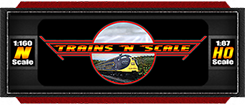 Loading... Please wait...
Loading... Please wait...-
Call us at: 941-500-2288
-
Mail Us at: Trains N Scale P.O. Box 178 Lehigh Acres, FL 33970-0178
- My Account
- Items / $0.00
All prices are in All prices are in USD
Categories
- Home
- Models and Prototypes Blog
- The Krupp K5 [E] World War II German Railway Artillery Gun
The Krupp K5 [E] World War II German Railway Artillery Gun
Posted by Neville C. Wilson on 21st Jun 2017
Since heavy naval guns had already come into use in land based coastal fortifications, when mounted on railway carriages, extremely heavy land-based artillery cannons were no longer confined to stationary locations, which in addition to their being used as mobile coastal defense batteries, enabled their use on the battlefield, where they were deployed in groups.
As offensive and defensive
weapons, the development of railway guns became particularly attractive in
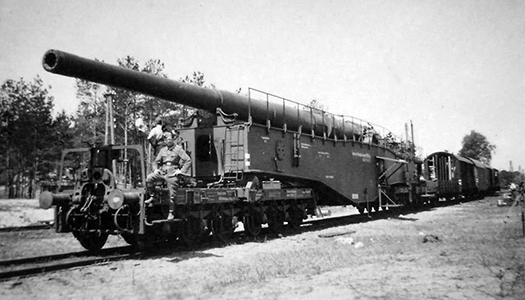
Manufactured by Krupp (of
An extremely accurate 283 millimeter (11.1 inch) caliber, 21.539 meter (70 foot 8 inch) long rifled gun barrel that was attached to a non-traversing, fixed mount, provided the long range artillery piece fifty degrees of vertical elevation, but only one degree of horizontal traverse, which meant the entire ensemble had to be moved when lateral positioning was required.
Prepared well in advance of any operations that required firing off of the weapon's centered firing line, special curved sections of track, or a turntable needed to be constructed at predetermined sites.
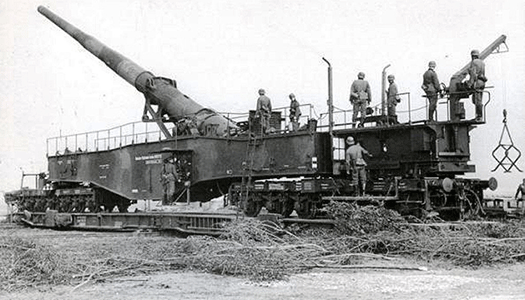
Heavy artillery pieces that lobbed either 255 kilogram (562 pound) or 265 kilogram (547 pound) shells to a maximum range of 64 kilometers (forty miles), K5's were fairly long range guns, with fifteen rounds per hour firing rates.
Despite weighing 218 US Short Tons (435,999 pounds), having an overall length of 32 meters (104.99 foot), and a width of 3.05 meters (10 foot) in travel mode, through the use of a pair of six axle, twelve wheel trucks that provided maximum weight distribution, the K5 gun carriage design permitted it to be moved across the European continent's extensive commercial railway network, as-well-as purpose built military trackage.
While they were indeed mobile, one of the shortcomings of the K5 was that when they were deployed, a fairly large contingent of personnel and equipment was needed to move, operate and support each gun battery.
Comprised of a pair K5s, each railway artillery battery was supported by three trains.
With each train requiring a pair of locomotives, which included both steam and diesel propelled units, there was one consist for each railway gun and a third that was made up of freight, refrigerator, and passenger cars, which carried the shells, equipment, cordite, and large support crew that was needed during deployment.
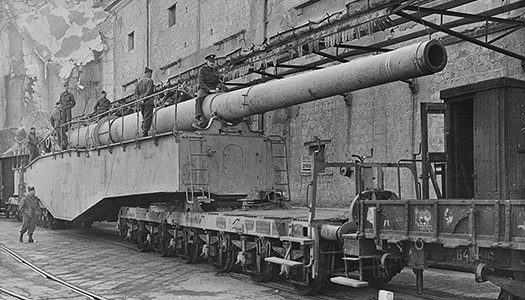
Notwithstanding the aforementioned limitations, the K5 is considered by many to be the second World War's most formidable and successful railway artillery piece.
Although additional improvements (e.g., refinements to the gun barrel and lighter weight, rocket motor boosted ammunition that increased the gun's firing range, at the expense of slightly diminished pinpoint accuracy) to the K5 family line continued throughout its years of deployment, in the waning years of World War II, with rapid allied advances on the European continent, greater emphasis was placed on projects that would shift the control of Europe back in Germany's favor; state of the art and pioneering weaponry of the day, such as the Messerschmitt Me 262 jet fighter/interceptor and fighter/bomber, the Fieseler V-1 flying bombs, and the Mittelwerk V-2 rockets.
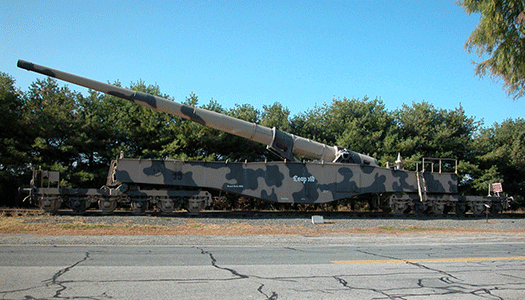
Formerly residing at
Maryland's, Aberdeen Proving Ground, one of only two remaining K5s that was
constructed using components from a pair of German crew sabotaged guns (named Leopold and Robert by their German crews and called Anzio Express and Anzio Annie
by Allied troops) that were discovered in Civitavecchia, Italy, on June 7,
1944, by American troops moving out upon the completion of the Anzio, Italy
campaign (Operation Shingle, which
was fought from January 22, 1944 - June 5, 1944) was relocated (along with
other museum pieces, in order to comply with the Base Realignment and Closure law passed by the US Congress in 2005) by the US Army Ordnance Corps to its US Army Ordnance Training and Heritage Center at Fort Lee,
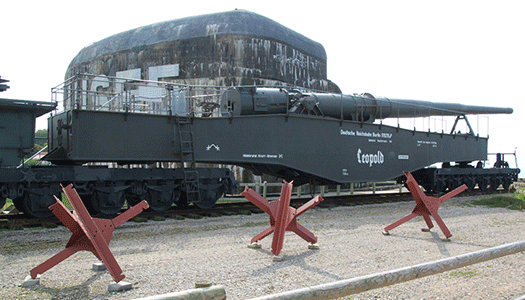
Typically fabricated out of resin, or injection molded plastic, ranging from 1:144 on up to 1:35 scale, numerous model manufacturers have produced kit-built and/or fully assembled replicas of the world famous Krupp K5.

Dragon Models 20153 1:144 Scale K5 Leopold in Winter Camouflage Paint Scheme

Hobbytrain H23600 1:160 N Scale K5 Leopold in Summer Camouflage Paint Scheme

Hobbytrain H23601 1:160 N Scale K5 in Wehrmacht Gray with Gun Barrel Rings

Hobbytrain H23602 1:160 N Scale K5 in Wehrmacht Gray with Gun Barrel Ring

Hobbytrain H23603 1:160 N Scale K5 Leopold in Winter Camouflage Paint Scheme

Rivarossi HR6186 1:87 HO Scale K5 Bruno in Winter Camouflage Paint Scheme

Rivarossi HR6187 1:87 HO Scale K5 in Wehrmacht Gray with Gun Barrel Rings
View additional articles like this one in the Trains N Scale™ Models and Prototypes Blog.
Recent Posts
- » A Quick Look: InterMountain Fox Valley Red Caboose Autoracks Review
- » A Quick Look: Athearn 2293 N UPS Wedge Trailers and Dolly
- » A Quick Look: Atlas N 1993 Ford Explorer SUV 5th Run Review
- » A Quick Look: Eastern Seaboard Models N Metal Wheel-Sets Review
- » A Quick Look: Jacksonville Terminal JTC NSC 53' Well Cars Review
